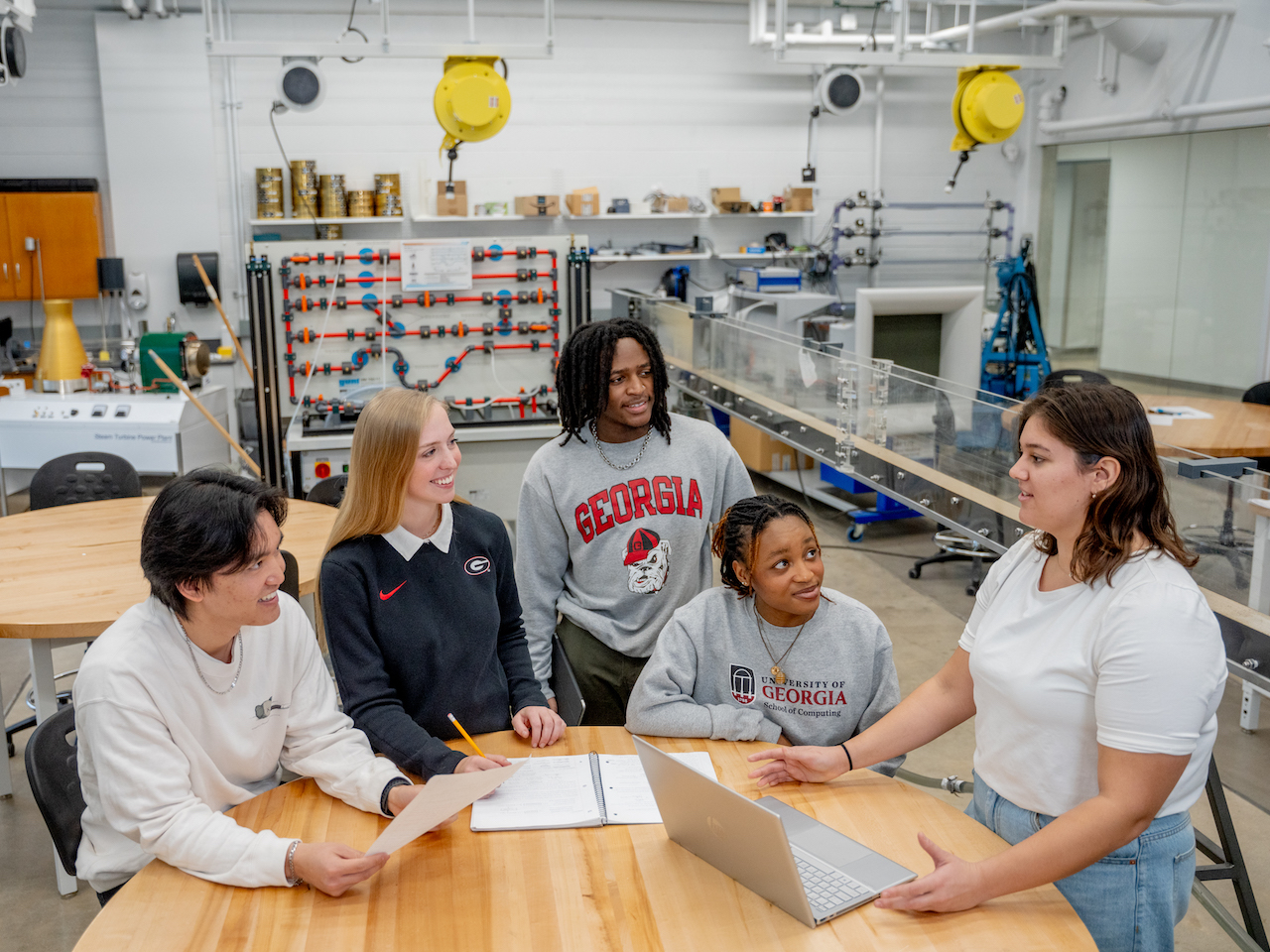 In today’s increasingly technological world, students—especially young girls—who develop coding skills later rather than earlier in life are often less motivated to work in science, technology, engineering and mathematics fields, further contributing to the “engineering gap” between men and women.
In today’s increasingly technological world, students—especially young girls—who develop coding skills later rather than earlier in life are often less motivated to work in science, technology, engineering and mathematics fields, further contributing to the “engineering gap” between men and women.
But thanks to a $2.1 million study funded by the National Science Foundation, the UGA College of Engineering and the UGA College of Education will develop a model course that prepares elementary school teachers to more efficiently teach mathematics, science and coding using interdisciplinary approaches, which may help increase student motivation in STEM fields of study.
“There are numerous articles that provide evidence that coding skills are needed in virtually any career that a young student may later choose to pursue,” said Tim Foutz, a professor in the College of Engineering’s School of Environmental, Civil, Agricultural and Mechanical Engineering and principal investigator of the study. “The project is focused on learning to construct and critique arguments, an essential foundational skill for decision-making.”
The three-year, STEM+C design and development project, titled Collective Argumentation Learning and Coding, or CALC, integrates the teaching of coding and robotics with the standard practices already used to teach mathematics, science and other curriculum content.
The research team, which includes four investigators in the College of Education, is collaborating with the Jackson County School District during the 2018 spring semester to provide professional development for a group of elementary school teachers enrolled in a robotics for teachers course designed by Roger Hill, a professor in the College of Education’s department of career and information studies and a co-principal investigator of the project.
“There are many different kinds of scientific and mathematic principles that might be incorporated into one of these lessons,” said Hill. “We pick and choose depending on what we need to teach and one of the strategies has been to have teachers identify areas where they have struggled in the past.”
A range of robotic kits will be used to enhance traditional lesson plans with a focus on STEM content. By using these tools, participating teachers will not only help students develop a fundamental understanding of programming and coding, but also the mechanics, assembly and wiring required to make the robots function.
Additionally, the team will coach the teachers in their lesson instruction and assess the effectiveness of the CALC concept as a method to teach and learn computer science. The assessments will include capturing teacher actions via video recordings that will be analyzed in an ongoing process as well as interviews of teachers and assessment of student work.
“And so the approach here is a little bit different too in that it’s integrated,” said Hill. “Our traditional approach to instruction in not only elementary school, but at all different levels, tends to be split into silos. With this study, we don’t do that. It’s all mushed together kind of like real life because it’s contextualized.”
Another component of the study will build on an argumentation framework for teachers that encourages students to learn mathematics and science by behaving like an actual mathematician or scientist in the field.
For example, a teacher focused on argumentation may pose a problem that can be solved using multiple methods. The teacher will focus on what the students claim, what they use for evidence for their claims and how they explain their reasoning.
“One thing we are hoping is that helping students to make arguments in their coding rather than relying on trial and error will decrease their frustration with coding and increase their connections to mathematics and science, as they will use similar methods and vocabulary across the subjects,” said AnnaMarie Conner, an associate professor in the department of mathematics and science education. “Also, exposing students to coding and robotics at an early age will hopefully spark an interest in these and other STEM areas of study.”
While the impact of the project may begin with coding and computer science instruction, the skills that the CALC approach builds are needed in many other important facets of 21st-century living, said Foutz.
“We’re going to teach what we already teach, but we’re going to try to do it better,” said Hill. “We’re already teaching computation, but we want to do a better job of doing that. We want the students to understand it at a deeper level; we want them to have an appreciation of what data are; and we want them to have an appreciation of how data can lead us to good decisions.”
Ultimately, the outcomes of the study will inform the fields of computer science, mathematics and science education on the benefits of using an argumentation-based approach to learning that integrates STEM teaching with standard practices—a core objective of the STEM+C program.
Other researchers working on this grant include the College of Education’s ChanMin Kim, an associate professor in the department of career and information studies; Barbara Crawford, a professor in the department of mathematics and science education; and Sid Thompson, current chair of the College of Engineering’s School of Environmental, Civil, Agricultural and Mechanical Engineering.
Writer: Kathryn Kao, UGA College of Education


